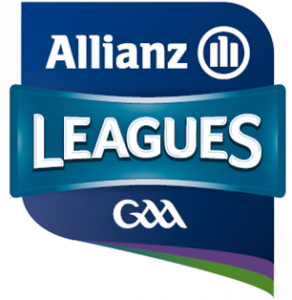
Wikipedia - National Hurling League
The National Hurling League is an annual inter-county hurling competition featuring teams from Ireland and England. Founded in 1925 by the Gaelic Athletic Association, it operates on a system of promotion and relegation within the league system.
The league has 35 teams divided into six divisions, with either five or six teams in each division. Promotion and relegation between these divisions is a central feature of the league. Although primarily a competition for Irish teams, teams from England – currently Lancashire, London and Warwickshire – also take part, while in the past New York also fielded a team for the latter stages of the league. Teams representing subdivisions of counties, such as Fingal and South Down have also participated at various times.
The National Hurling League has been associated with a title sponsor since 1985. Ford, Royal Liver and Church & General have all served as sponsors of the league since then. The competition is currently sponsored by Allianz and is officially known as the Allianz Hurling League.
The league season runs from January to March with each team in the group playing each other once. Division 1 of the league features the top twelve hurling teams split into two divisions of six. A knock-out stage follows for the four top-placed teams in each division. The winners of the Division 1 title are awarded the Dr Croke Cup and are officially regarded as the National Hurling League champions.
The National Hurling League title has been won by 10 different teams, 9 of whom have won the title more than once. The all-time record-holders are Tipperary and Kilkenny, who have won the league on 19 occasions. Clare won the 2024 title.
History
Creation
Since 1887, the All-Ireland Championship had been steadily growing in interest and in participation. The championship, however, was largely confined to the summer months, resulting in a lack of top class inter-county action between September and April. Inter-county tournament games were popular as a way of filling the void, while some provinces organised their own pre-championship competitions, most notably the Thomond Feis in Munster. Several counties had also organised inter-club leagues as a means of supplementing the county championship by providing more games. While these had proved successful, it was decided to create a national senior inter-county league to provide games during the winter and spring months.
Beginnings
The inaugural National Hurling League began on 27 September 1925 and ended on 16 May 1926. Seven teams - Cork, Dublin, Galway. Kilkenny, Laois, Limerick and Tipperary - competed in a six-game single round-robin format. At the end of the group stage the top two teams contested the league final. Cork won the 1925–26 league following a 3–7 to 1–5 defeat of Dublin in the final.
Development
While no league took place during the 1926–27 season, the 1926–27 league featured nine teams. A single round-robin format was once again used, with each team playing eight games. The second league featured no final, with Tipperary being declared champions after securing 14 points from their group stage games.
The 1928-29 league featured twelve teams divided in two groups based on geographical position. The Eastern Division comprised five teams from the province of Leinster, while the Southwestern Division had seven teams from the province of Munster and Galway. The top teams in each division played off in the final to determine the champions. This format was used on a number of occasions until the 1934–35, when the league reverted to a straightforward one-group league with the top-placed team being declared the champions. This format was used again during the leagues in 1935–36 and 1936–37.
Ten teams entered the 1937–38 league, with two groups of five teams competing. A third group was added in 1938–39 as the number of teams increased to thirteen. These formats were regularly used over the following seasons, depending on the number of teams participating.
Between 1941 and 1945 the league was suspended due to the Emergency.
The 1955–56 league saw the introduction of a major change in format. As a result of a lack of interest from defeated first-round teams in recent years, Central Council introduced a two-division league featuring a new system of relegation and promotion. Division 1 was confined to ten teams in two groups of five. The bottom-placed team in each group would play off to decide which of the two teams would be relegated. Division 2 was made up of the 'second tier' hurling teams and featured eight teams divided into two groups. Limerick became the first team to be relegated, while Antrim became the first team to gain promotion under the new system.
NHL Division 1B는 게일릭 풋볼과 하키 경기에 대한 열정과 경기력을 겨루는 훌륭한 기회를 제공합니다. 이 대회는 아일랜드의 다양한 도시와 지역에서 개최되며, 각 팀은 최고의 선수들로 구성되어 경기를 펼칩니다.
게일릭 풋볼은 아일랜드의 전통적인 경기로, 축구와 랭커로스의 특징을 결합한 스포츠입니다. 풋볼 경기는 넓은 구장에서 펼쳐지며, 선수들은 공을 발로 차거나 손으로 패스하며 상대편 골대에 공을 넣는 것을 목표로 합니다.
하키는 게일릭 스포츠 중 하나로, 공을 목표 지점에 넣는 것을 목표로 하는 경기입니다. 하키 경기는 작은 공원에서 진행되며, 선수들은 목표 지점에 공을 넣기 위해 하키 스틱을 사용합니다.
NHL Division 1B는 게일릭 풋볼과 하키 경기의 경쟁력과 열정을 경험할 수 있는 훌륭한 토너먼트입니다. 이 대회는 아일랜드의 스포츠 문화와 전통을 대표하는 행사로, 많은 관객들에게 즐거움과 흥미를 선사합니다.